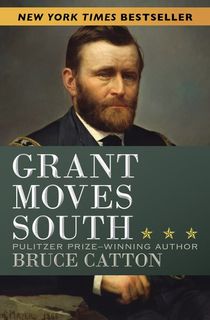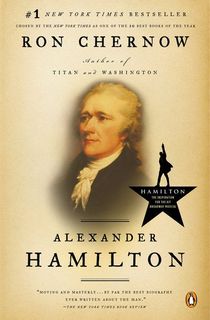The most successful popular historians possess that rare ability to bring the past to life and make their subject accessible to all without ever compromising on that all-important factual detail. Popular historians tend to aim for a wide readership and emphasize the human rather than scholarly aspects of history, setting them apart from their more traditional counterparts. Whether you’re looking for a detailed examination of a particular conflict or deep insight into a colorful figure from the past, there is something for everyone in the following list of authors, who all share this unique talent.
Walter Lord
Baltimore-born Walter Lord (1917-2002) studied to be a lawyer, but soon turned his attention to writing after landing a job as a copywriter with the New York advertising agency J. Walter Thompson. Long obsessed with the sinking of the Titanic, he made his name as a nonfiction writer of documentary-style history with the 1955 bestseller, A Night To Remember. Here he first employed the then-revolutionary method of using eyewitness accounts from survivors to tell the story of the tragedy.
Lord continued to use the same personalized approach to history in 10 subsequent bestselling books on topics including Pearl Harbor, Dunkirk, and the Alamo. His ability to combine a journalistic approach to history with vivid storytelling was second to none and made him one of the most popular nonfiction writers of his era.
In later life, he returned to the subject of the Titanic in The Night Lives On (1986) and acted as a consultant to director James Cameron on the 1997 Hollywood blockbuster movie about the disaster.

A Night to Remember
Based on interviews with 63 survivors of the Titanic disaster, Lord’s minute-by-minute account of events on that fateful night in April 1912 remains one of the most authoritative books on the subject nearly 70 years after it was first published. From the initial moment of impact to the struggle for survival in the freezing water, the New York Times bestseller catalogues in vivid detail the experiences of the passengers and crew who were involved in one of the worst maritime disasters in history.

Day of Infamy
Lord interviewed hundreds of eyewitnesses and drew on multiple accounts of the incident in the diaries and letters of survivors in order to produce this detailed reconstruction of the attack on Pearl Harbor in December 1941. Controversially for the time, the author even interviewed some of the Japanese pilots involved in the attack, as well as recounting many individual tales of heroism and courage by members of the American armed forces on what was one of the darkest days in US history. US historian Stephen E. Ambrose commented of the New York Times bestseller that, “There have been many books on Pearl Harbor…but none of them have equaled Lord’s."
Bruce Catton
Acclaimed as “one of America’s foremost Civil War authorities” (Kirkus Reviews), Bruce Catton (1899-1978) was enthralled from a young age by the tales he heard about the conflict from veterans. After serving in the US Navy during World War I, he worked in journalism for many years before focusing on historical nonfiction.
He first came to attention for his work on the Civil War following the success of his trilogy of books known collectively as Army of the Potomac, for which he was awarded the 1954 Pulitzer Prize for History. Catton went on to write extensively on the subject, including two further highly acclaimed trilogies, which cemented his reputation as America’s most popular writer on the conflict. He also received plaudits from the academic world for his achievements as the long-time editor of American Heritage magazine.

Mr. Lincoln's Army
Beginning with Mr. Lincoln’s Army (1951), Catton’s Pulitzer Prize-winning Army of the Potomac trilogy follows the four-year history of the Union Army from its creation in July 1861 up to the point at which it was disbanded in June 1865. In this first volume, the popular historian brings to life in riveting detail events from the early years of the Civil War, focusing on the exploits of the controversial General George McClellan and his fall from grace following the Battle of Antietam.
Catton resumed this absorbing trilogy with Glory Road (1952), which continues the story up to the Battle of Gettysburg in July 1863. The final volume, A Stillness at Appomattox (1953), deals with the campaigns of Ulysses S. Grant and the final stages of the war.

Grant Moves South
Catton returned to the subject of Ulysses S. Grant in this 1960 New York Times bestseller. Fellow historian Lloyd Lewis had intended to write his own biography of Grant, but only finished the first volume, Captain Sam Grant, before his death in 1949. Catton was asked to complete the trilogy and was given access to Lewis’ extensive historical research. In Grant Moves South, he provides a fascinating account of Grant’s rise within the army, and the story behind the development of the innovative military tactics for which the Union Army commander became famous.
The author subsequently completed his insight into Grant’s Civil War years with Grant Takes Command (1969).
John Julius Norwich
English writer and broadcaster John Julius Norwich (1929-2018) is famously reported to have abandoned a career as a diplomat to become an author following a visit to Sicily in 1961. On discovering that there were no books about the Mediterranean Island’s long and colorful history, he decided to write his own. From then onwards, he wrote extensively about a wide range of historical subjects including Venice, the Byzantine Empire and the Papacy. With a particular passion for the colorful characters who inhabited the past, his books have found favor with historians and the general public alike.

A History of Venice
John Julius Norwich’s fascination with the “most beautiful and magical of cities” was such that he visited Venice over 200 times during the course of his life and used the success he enjoyed as a writer and broadcaster to campaign for the conservation of its unique architecture through the Venice in Peril Fund. In A History of Venice, Norwich effortlessly guides the reader though the story of the city’s fascinating past, such as its origins in the fifth century and the point at which the Venetian Republic surrendered to Napoleon in 1797. Populated with extraordinary characters and full of colorful anecdotes, Norwich displays his passion for his favorite city, as well as his extensive knowledge of its past, in what is now regarded as “the standard English work of Venetian history” (Financial Times).

Absolute Monarchs: A History of the Papacy
Norwich was in his early 80s by the time he wrote this New York Times bestseller, a fascinating 2,000-year history of the Papacy which cemented his reputation as an “enchanting and satisfying raconteur” (Washington Post). From Saint Peter to Benedict XVI, the popular historian chronicles the lives of some of the most fascinating characters to hold the office. The result is an “endlessly interesting” book that is “stuffed with monsters, absurdities, wonders and politics” (The Scotsman).
Mary Beard
Born in 1955, Mary Beard was the only woman in her department when she first started teaching Classics at Newnham College, Cambridge, in 1984. She went on to enjoy a stellar academic career and has only recently retired from her role as Professor of Classics at Cambridge University.
The English classical scholar first became known to a wider audience following the publication of her book on Pompeii in 2008. Since then, she has become one of the academic world’s most popular public figures, publishing several more bestselling books on Ancient Rome and making regular appearances on TV.

SPQR
Taking its title from the Roman phrase Senatus Populusque Romanus, meaning “The Senate and People of Rome”, Mary Beard’s 2015 masterpiece SPQR offers a unique perspective on nearly 1,000 years of Roman history. Writing “with passion and without technical jargon” (Wall Street Journal), she not only explores the reasons behind the development of a once-insignificant Mediterranean settlement into one of the world’s most powerful empires of all time, but also tackles the fascinating question of just what it meant to be Roman. In the process, this New York Times Notable Book challenges some long-held historical perspectives regarding the ancient civilization.

Women and Power: A Manifesto
The acclaimed classicist takes on a slightly different topic in this 2017 international bestseller. Beard herself has been the subject of virulent misogynist abuse on social media, and in Women and Power seeks to address the problem by tracing the treatment of powerful women from ancient times to the present day. Her subjects range from the mythological Medusa to modern political figures like Margaret Thatcher and Hillary Clinton. Unlike her ancient history tomes, this “modern feminist classic” (The Observer) only runs to around 100 pages, but there is much to admire in Beard’s “sparkling and forceful manifesto” (New York Times).
Ron Chernow
Born in 1949, Ron Chernow began his career as a freelance journalist, but has since enjoyed considerable success as a popular historian. His first book, The House of Morgan, was published in 1990 to great acclaim, winning that year’s National Book Award for Nonfiction. The New Yorker subsequently wrote about another leading American banking dynasty, the Warburgs, before turning his attention to the nation’s early political heroes. His 2011 book, Washington: A Life, was awarded the Pulitzer Prize for Biography.

Alexander Hamilton
In this 2004 New York Times bestseller, Chernow brings memorably to life the story of influential Founding Father, Alexander Hamilton. Chernow’s vivid and compelling portrait returned Hamilton to the forefront of the public imagination and provided the inspiration for the award-winning Broadway musical. Described by fellow author David McCullough as “grand-scale biography at its very best”, Chernow does full justice to an extraordinary life, which began in obscurity in the Caribbean and ended in a duel with the then-vice president in 1804.

Titan: The Life of John D. Rockefeller, Sr.
Before he turned his attention to Alexander Hamilton, Chernow wrote this biography of John D. Rockefeller, the first American billionaire and the patriarch of the famous Rockefeller dynasty. He commented on Rockefeller that “Seldom has history produced such a contradictory figure…his good side was every bit as good as his bad side was bad.” Chernow was the first biographer to be given unlimited access to the family archives and the result is a “wonderfully fluent and compelling” (New York Times) insight into a highly complex character.





